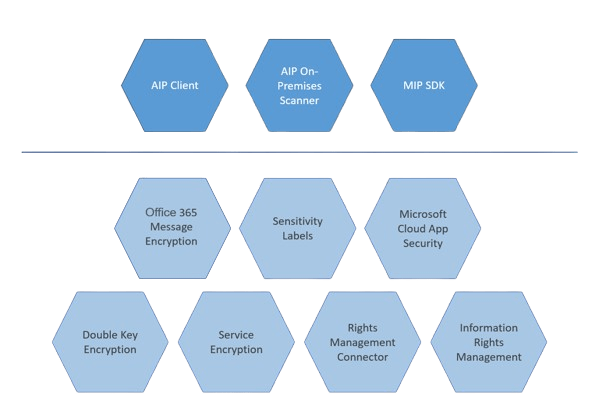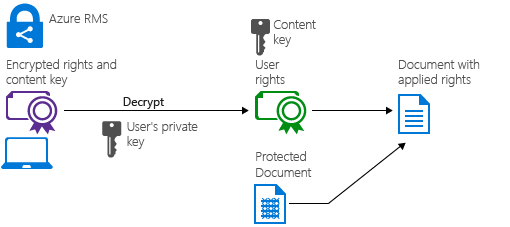
- Introduction to Azure Information Protection
- Key Features of Azure Information Protection
- How Azure Information Protection Works
- Setting Up Azure Information Protection
- Azure Information Protection Labels and Policies
- Azure Information Protection for End Users
- Monitoring and Reporting with Azure Information Protection
- Benefits of Using Azure Information Protection
- Conclusion
Introduction to Azure Information Protection
In the modern era, Data Security Compliance has become one of the top priorities for businesses. With the rise of digital transformation, organizations increasingly store and manage vast amounts of sensitive data. As the complexity of cyberattacks increases, companies must find advanced solutions to protect their valuable data. One such solution is Azure Information Protection (AIP). Azure Information Protection, part of Microsoft’s cloud offerings, is a comprehensive solution for protecting sensitive information in the workplace. Whether it’s documents, emails, or other types of digital assets, AIP provides users with tools to classify, label, and protect data based on its sensitivity. This guide will walk you through Microsoft Azure Information Protection, its features, and how it can help organizations secure their data seamlessly and efficiently. Whether you’re taking a Microsoft Azure course or implementing security measures, this guide will provide essential insights. Azure Information Protection is a cloud-based solution designed to help organizations safeguard their internal and external sensitive information. This powerful tool allows businesses to apply encryption, rights management, and access control to data, regardless of where it is stored or shared. AIP integrates with existing Microsoft 365 Integration services and apps, such as Microsoft Outlook, Word, Excel, and PowerPoint, making it an intuitive and easy-to-use tool for organizations. With Azure Information Protection, companies can classify data based on sensitivity, label it accordingly, and apply encryption or protection to ensure that sensitive information remains secure. In today’s world, organizations face the risks of data leaks, unauthorized access, and compliance violations. Azure Information Protection helps mitigate these risks by providing comprehensive data security.
Key Features of Azure Information Protection
Azure Information Protection offers several features that make it a valuable tool for organizations. These features help businesses manage, classify, label, and protect their data. Here are some key features:
- Data Classification: Azure Administrator certification article : AIP automatically labels data based on its classification. This ensures that sensitive information is tagged and protected according to predefined policies. Labels can be manually or automatically applied to documents and emails.
- Data Labeling: AIP automatically labels data based on its classification. This ensures that sensitive information is tagged and protected according to predefined policies. Labels can be manually or automatically applied to documents and emails.
- Encryption and Rights Management: AIP uses encryption and rights management to protect data from unauthorized access. This includes setting permissions, restricting actions like printing or forwarding, and protecting data even when shared externally.

- Seamless Microsoft 365 Integration Apps: Azure Information Protection integrates with Microsoft Office applications, SharePoint, and OneDrive. Users can apply classification and protection to their documents directly from these tools, making the process seamless and efficient.
- Compliance Reporting and Auditing: AIP includes tools for tracking and monitoring how data is accessed, shared, and used. These auditing capabilities ensure compliance with data protection regulations and help businesses keep track of sensitive data usage.
- Auto-labeling: AIP can automatically apply labels based on predefined conditions. For example, emails or documents containing specific keywords can be automatically labeled as “Confidential” or “Highly Confidential,” ensuring they are adequately protected.
Excited to Achieve Your Microsoft Azure Certification? View The Microsoft Azure Training Offered By ACTE Right Now!
How Azure Information Protection Works
Azure Information Protection works by leveraging advanced tools and processes that allow organizations to safeguard their sensitive data efficiently. The core elements of this service are classification, labeling, and protection. Organizations can classify their data based on Azure Administrator certification article explains how AIP automatically labels data based on its classification, ensuring sensitive information is tagged and protected according to predefined policies. Once classified, the data is labeled with visual markers that indicate its level of protection, helping users quickly identify how to handle it. Additionally,Azure log analytics for monitoring and diagnosis can be leveraged for monitoring and diagnosis, providing insights into data access patterns, security incidents, and compliance adherence. Labels can be applied automatically, manually, or based on rules designed to fit the organization’s specific needs. After classification and labeling, the appropriate protection settings, such as encryption, rights management, or restrictions on modifying, copying, or sharing data, are applied. This ensures that sensitive data remains secure. Furthermore, when users share or collaborate on protected documents, Azure Information Protection controls access based on the labels and protection applied, preventing unauthorized users from accessing or modifying the sensitive data. This robust system ensures that organizations maintain a high level of security across their data.
Setting Up Azure Information Protection
Setting up Azure Information Protection requires careful planning and configuration to protect data efficiently. The process includes several steps, including assigning licenses, defining policies, and configuring labels.
- Assigning Licenses: To use Azure Information Protection, organizations need to assign users the appropriate licenses. These licenses are typically part of the Microsoft 365 Integration Enterprise plans.
- Defining Classification and Labeling Policies: Organizations should define precise classification and labeling policies based on the data types they handle. These policies determine how data is classified, labeled, and protected.
- Configuring Auto-labeling Rules: Auto-labeling is an essential feature of Azure Information Protection. Administrators can set up rules that automatically apply labels based on content inspection, such as specific keywords, credit card numbers, or personally identifiable information (PII).
- Training and Awareness: It is essential to train employees to use Azure Information Protection effectively. This includes understanding how to classify and label data, as well as how to share and collaborate on protected documents.
- Manual Labeling: End users can manually place labels on documents or emails with Microsoft Office applications, including Word, Excel, and Outlook. It has an easy-to-use interface where users can choose the correct label depending on the sensitivity of the content.
- Auto-labeling:When auto-labeling is enabled, Azure Information Protection automatically applies the appropriate label to documents or emails based on predefined conditions. This helps ensure that sensitive data is always appropriately protected, even if users forget to label it manually. As part of this process, an Azure solution Architect can design and implement policies that align with organizational security and compliance requirements.
- Securing Shared Data: When users share secured emails or documents, Azure Information Protection applies the security controls required, for example, encryption or access restrictions. The receiver can receive the data only if they have the required permission.
- Viewing and Working with Protected Content: End users can view and work with protected content based on the permissions established by the data owner. For instance, they can be permitted to view the document but not print or edit it.
- Enhanced Data Security: AIP protects sensitive information against unauthorized access, both internally and externally, through encryption, access control, and rights management.
- Simplified Compliance: Azure Information protection helps organizations meet data protection regulations such as GDPR, HIPAA, and PCI-DSS, providing tools for labeling, classifying, and auditing sensitive data.
- Seamless Integration: With AIP’s integration into Microsoft 365 apps like Outlook, Word, and SharePoint, users can easily apply classification and protection to data without disrupting their workflow.
- Centralized Management and Scalability: AIP allows administrators to manage data protection policies through the Azure portal and offers a scalable solution that adapts to the growing needs of organizations of all sizes.
Excited to Obtaining Your Microsoft Azure Certificate? View The Microsoft Azure Online Training Offered By ACTE Right Now!
Azure Information Protection Labels and Policies
Azure Information Protection labels are a fundamental feature of the service, enabling users to easily identify a document’s sensitivity and apply the necessary protection to secure the data. Classification labels define the data’s sensitivity level, such as “Confidential,” “Highly Confidential,” or “Public,” helping users determine how to handle the information appropriately. Protection labels, on the other hand, define the specific protection mechanisms that are applied to the data, including enforcing encryption, restricting access, or preventing actions like printing or forwarding. A Microsoft Azure Information Protection also allows organizations to create custom labels tailored to their specific data protection policies and compliance requirements. Whether you’re implementing security measures or taking a Microsoft Azure Training , understanding these features will help you enhance data protection effectively. Label policies play a critical role by establishing rules that determine how and when labels are applied, and they can be configured to automatically apply labels based on the data’s content, context, or predefined criteria. Additionally, these policies help automate the enforcement of security practices, reducing the risk of human error in data handling. Furthermore, the customizability of labels allows businesses to adapt the service to their unique needs and compliance requirements, ensuring robust data protection across all platforms.
Contemplating a Master’s Degree in Cloud Computing?Enroll For Advanced Cloud computing Training Today!
Azure Information Protection for End Users
Azure Information Protection is user-centric, enabling end users to safeguard data without requiring advanced technical expertise. This is how it works for end users:

Monitoring and Reporting with Azure Information Protection
Azure Information Protection provides organizations with powerful tracking and reporting capabilities, ensuring that sensitive information is effectively managed and complies with both internal policies and external regulations. The service generates activity logs that track how data is accessed, shared, and utilized, allowing administrators to identify potential security breaches. Additionally, administrators can configure alerts and notifications to stay informed of any unauthorized access or sharing of sensitive data, enabling quick action to prevent data breaches. Azure Information Protection also offers robust reporting tools that give organizations in-depth insights into data usage, classification, labeling, and protection. These reporting features are essential for auditing purposes and ensuring compliance with data protection regulations. Azure Information Protection also allows administrators to customize reporting to meet specific organizational needs, offering tailored insights for better decision-making. Additionally, integrating Azure firewall enhances security by providing network-level protection, ensuring that sensitive data remains safeguarded against unauthorized access. Azure Information Protection also allows administrators to customize reporting to meet specific organizational needs, offering tailored insights for better decision-making. These customizable reports can provide a comprehensive overview of how sensitive data is being handled, ensuring all necessary precautions are taken. With Azure Information Protection, organizations gain full visibility into their data security, making it easier to demonstrate compliance during audits and enhance overall data protection strategies.
Getting Ready for Microsoft Azure Job Interview?Check Out Our Blog on Microsoft Interview Questions & Answer
Benefits of Using Azure Information Protection
Using Azure Information Protection (AIP) offers several key benefits for organizations:
Conclusion
Azure Information Protection (AIP) is an essential tool for businesses looking to safeguard their sensitive data and maintain compliance with data protection regulations. With its robust data classification, labeling, encryption, and rights management features, AIP helps organizations implement a comprehensive data security strategy. Integrating seamlessly with Microsoft 365 apps, AIP offers a user-friendly approach to protecting data without disrupting workflows. Whether it’s ensuring compliance with regulatory requirements, preventing unauthorized access, or simply securing confidential information, Azure Information Protection offers a scalable and flexible solution. As data privacy concerns continue to rise, implementing tools like Microsoft Azure information Protection (AIP) is crucial for any organization committed to protecting its sensitive information, improving operational security, and reducing the risks of data breaches. Whether you’re enhancing your security strategy or taking a Microsoft Azure Training , understanding AIP is essential for safeguarding data effectively. In an increasingly digital world, Azure Information Protection stands as a key enabler in helping businesses secure their most valuable assets and data while allowing them to stay focused on innovation and growth.





